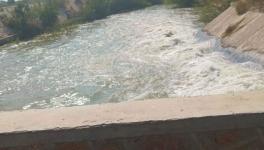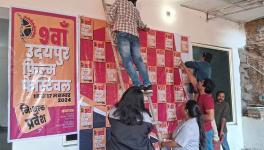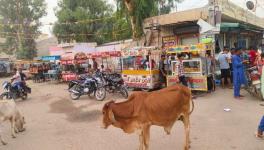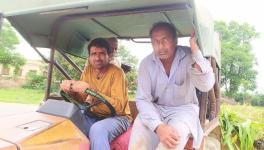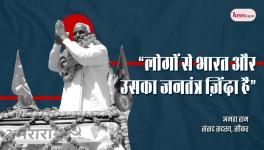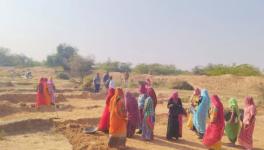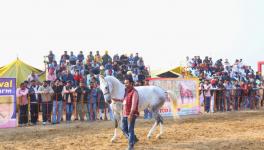Rajasthan: Camelshalas for ‘Unwanted’ Camels a bad Idea, Say Herders
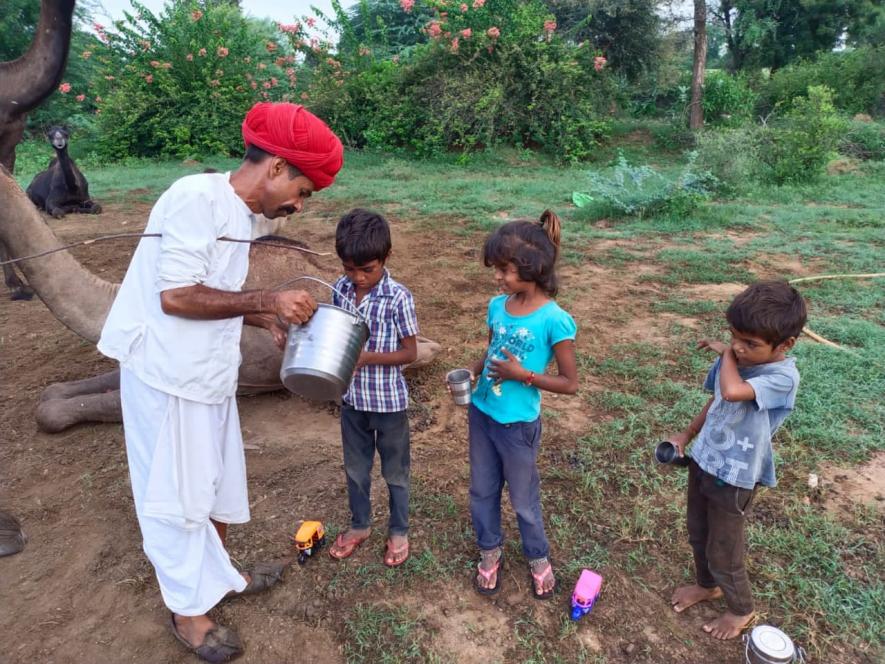
Rajasthan agriculture minister Lal Chand Kataria recently said that the state would consider setting up “camelshalas”. Just like gaushalas for unwanted cows, the camelshalas would house unwanted camels. Camel herders of the state, however, have never demanded such shelters.
The herders fear that setting up such shelters could cause a significant drain on government resources and serve no purpose at all in protecting camels. “Camels are large animals that need vast space – it would be unwise to herd them into enclosures,” says Hanwant Singh Rathore of the Lokhit Pashu Palak Sansthan (LPPS), an NGO based in Pali district.
In September 2021, as students returned to school in Rajasthan after the extended lockdown, LPPS began supplying raw camel milk to students at the government higher secondary school in Guda Joba village of Desuri tehsil of Pali district. The NGO is providing milk to the school children every day with grants it has received. “We expect to be able to keep up the supply for a few months,” Rathore told Newsclick.

Dhanesh Purohit, principal of the school, said, “Right now, we have girls and boys attending school on alternate days, to keep the numbers manageable and prevent overcrowding and lessen the risk of the spread of infection. Children have taken to the milk, and we have seen a nearly 15% increase in attendance. Two students say they do not like its taste, and they have refused the milk. But the other children relish it and may be responsible for spreading the word about the milk supply in school and encouraging others to come too.”
Rathore, director of LPPS, said, “Camel herding will remain viable if the important ecological services that the animal offers to the local community is recognised and valued. Camel dung is a source of natural fertiliser; wherever camels are left to rest during nomadic journeys, they leave behind this wealth for local farmers. There are also some seeds that do not germinate unless they pass through the digestive system of the ruminants, and the camels have helped in propagating such species.”
The camels feed on khejri (Prosopis cinearia), jal (Salvadora oleoides), mithi jal (Salvadora persica), babul (Acacia Arabica), kumtia (Acacia Senegal), orabjiya (Acacia leucophloea), bor (Zizyphus nummularia), neem (Azardirachta indica) and other plant species native to the Thar Desert. Since the camel only plucks off a few leaves from each tree as it walks past, it also prunes these and stimulates the wild species’ growth. Camel conservation is thus linked to the conservation of the flora of the wild desert region.
The problem is that camel herders – like the Raika, with a long history and tradition of life intertwined with camel herding – are seldom consulted while drafting state policy. The Rajasthan Camel (Prohibition of Slaughter and Regulation of Temporary Migration or Export) Act, 2015, declared the camel the state animal and restricted herders from moving with their animals beyond state borders. Male camels would earlier be sold to traders from other states, and this sale became unviable. Cattle fairs at Tilwara and Pushkar, which drew people from across the country, suddenly found few takers for camels. Hence, the price of camels drastically fell, from Rs 70,000 for a healthy five-year-old camel about five years ago to about Rs 3,000.
With herders facing difficult times, camel numbers have dipped. The livestock census data shows over 70% dip n camel population since the 1990s. The latest census from 2019 shows 2,13,000 camels in the country, down from nearly 7.5 lakh in 1992. Over 85% of the country’s camels are in Rajasthan.
Camel herders have been petitioning the government to review and change the Camel Act. Agriculture minister Kataria has now agreed to make amendments. This time, however, the herders are keen that the law not be amended without consultation with their community leaders. The herders already have a draft policy ready, from 2017, when they had met at different venues to consult and collaborate.
This draft makes the following suggestions: Secure, establish, maintain camel grazing areas; invest in value addition for camel milk; incentivise heritage and other hotels to use and showcase camel products
Instead of spending the state’s resources on setting up camelshalas, the education department could supply camel milk to rural schools in areas where herders can supply milk. Camel milk is known for its medicinal value – the animals walk long distances and their diet is mainly the leaves of wild plants, so their milk has properties very different from that of stall-fed animals.
Khim Singh, whose family of four lives near the LPPS dairy at Sadri in Pali district, told Newsclick, “We have been using the milk for a few months now. It arrives at dawn, and we have it fresh. My son Virendra is no longer asthmatic, and it may have something to do with the milk he drinks. We now enjoy good health, and it is great to have the camel milk dairy so near.”
Camel milk is much sought-after by parents of autistic children. A regular diet of camel milk is shown to help increase the eye contact such children make. It helps them sleep better and calms them. Mumbai resident Neha Kumari, whose toddler needed a regular supply, appealed to the railways to keep up the supply during the lockdown.
Camel milk is also known to reduce blood sugar levels and aid in prevention of Tuberculosis. In Kenya, where camel milk is known as “white gold”, the Vitamin C and iron content in the milk is prized; in Rajasthan too, where access to fresh fruit and vegetables may be difficult, camel milk can serve to make up for any Vitamin C deficiency and prevent anaemia. The National Family Health Survey of 2015-16 showed that 53% of all women in India had anaemia.
It is heartening that agriculture minister Kataria is considering action to improve the situation of the state’s camel herders. Camel conservation requires collaboration across different departments. The tourism, biodiversity, environment and forest departments, education and health departments could collaborate to work out a system of camel milk supplies to households with patients of Tuberculosis. Regular milk supplies could also go to Anganwadis, so that pregnant, lactating women and small children have access to this milk, which is also a health tonic.
In Africa and Asia, camel population has been on the rise, given that the animal is uniquely suited to drought conditions. (Use graph from p9, draft state policy). In India, the pressure increased on camel herders after forest lands were barred to them while the commons and orans were taken over for other purposes. This has led to a decline in camel numbers.
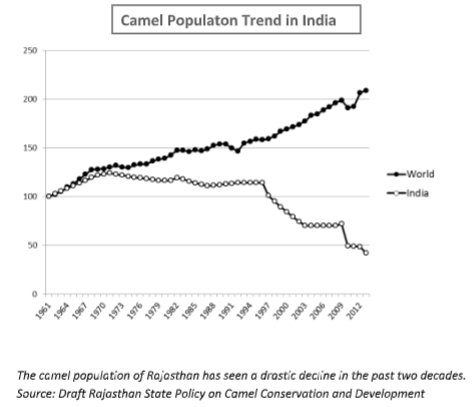
The Indira Gandhi Canal, bringing water to the Thar Desert region from Punjab, which is 600 km away, has affected prime camel breeding areas and cut through traditional migration paths of herders. Camel herders should be consulted by the state government so that dedicated grazing areas can be marked out for camels and other animals.
Besides milk, the hair and faeces of camels too can be used for making useful products. Traditionally, the Meghwal community in the state would weave from camel hair yarn – this practice is becoming rare now. Camel faeces, with its high fibre content, can be made into paper. The state could make these things into viable activities by exploring manufacturing and marketing opportunities.
Get the latest reports & analysis with people's perspective on Protests, movements & deep analytical videos, discussions of the current affairs in your Telegram app. Subscribe to NewsClick's Telegram channel & get Real-Time updates on stories, as they get published on our website.










